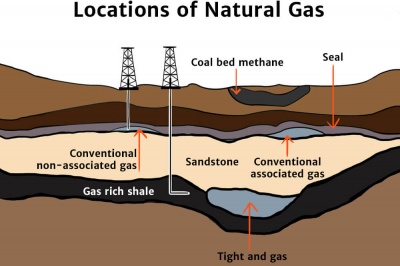Learn about whether natural gas is a renewable resource or not, and how you can make sure your home is powered sustainably.
What is natural gas?
Natural gas has formed naturally beneath the earth’s surface and primarily contains methane and other hydrocarbons such as nitrogen and carbon dioxide. Like other fossil fuels, it’s created from organic matter that died millions of years ago.
Natural gas is found deep in the earth’s core, further down than oil, so it’s complicated to extract and often harms the environment to do so.

Is natural gas renewable or nonrenewable?
As we traditionally view it, natural gas is not renewable, but its sustainability level depends on where it comes from. There are three types of natural gas:
- Abiogenic methane is a form of oil and gas that does not originate from fossil deposits. Instead, it came from deep, hydrogen-rich carbon deposits that were present since the earth’s formation.
- Biogenic methane is created in landfills and on farms that have cows or wherever there is organic matter. Microorganisms called methanogens live off of decaying organic matter, and their excrement is methane.
- Thermogenic methane is created when mud and rock sediment put the remains of animals and plants under vast amounts of pressure. This process takes place at extremely high temperatures and over millions of years.
Of these three types of methane, biogenic is the only one that could be described as renewable, though it comes through sources that cause climate change. Despite causing 20% less damage than other fossil fuels, the others are damaging to extract and will run out in 50+ years.
Why is natural gas not renewable?
Technically, natural gas should be considered partially renewable. Some aspects of natural gas are replenishable, whereas others are not. The nonrenewable gas extracted from deep beneath the earth takes millions of years to form and will take millennia to reform.
How is natural gas produced?
Natural gas, like oil, is formed out of decomposed organic matter derived from marine microorganisms deposited over the past few hundred million years. It is then extracted from the earth and refined, creating the different gas types (such as propane and butane) that we use today.
How bad is natural gas for the environment?
While natural gas is one of the cheapest energy sources, it isn’t good for the environment. It cannot be stored effectively and is nonrenewable, two significant problems.
Natural gas is extracted from wells, and the drilling and transportation in pipelines result in a significant amount of methane leakage. It offers cleaner burning than other fossil fuels and produces minor amounts of mercury, sulfur, and other particles. Burning natural gas does produce nitrogen oxides, which usually contribute to the creation of smog, but it does so on a much smaller scale than gasoline and diesel
Ultimately, natural gas is not the best option for choosing environmentally-friendly energy sources, but when compared to other resources, it presents less harm.
